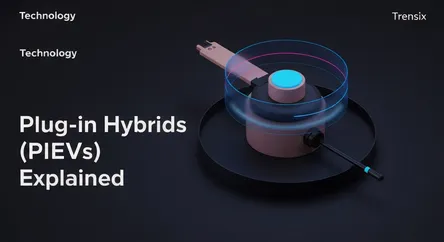Technology
Plug-in Hybrids (PHEVs) Explained

Discover Plug-in Hybrids (PHEVs), the vehicles combining a gas engine with an electric motor for the best of both worlds.
What is it?
A Plug-in Hybrid Electric Vehicle (PHEV) is a type of hybrid car that uses both a gasoline engine and an electric motor. Unlike a traditional hybrid, a PHEV has a larger battery pack that can be charged by plugging it into an external power source, like a home outlet or a public charging station. This allows it to travel a significant distance, typically 20-50 miles, on pure electric power before the gasoline engine takes over. This essentially gives the driver two cars in one: an electric vehicle for daily commutes and a conventional hybrid for long-distance travel without range anxiety.
Why is it trending?
PHEVs are surging in popularity as a practical bridge to full electrification. With rising fuel prices, the ability to handle daily errands and commutes using only cheaper electricity is a major draw. They eliminate the 'range anxiety' often associated with pure electric vehicles (EVs), as the gasoline engine provides a reliable backup for longer trips. Growing environmental awareness, coupled with government incentives and an expanding charging infrastructure, makes PHEVs an attractive, flexible option for consumers not yet ready to commit to a fully electric lifestyle.
How does it affect people?
For owners, PHEVs mean significant savings on fuel costs and reduced vehicle emissions. They offer the quiet, smooth ride of an EV for city driving while retaining the convenience of a gasoline car for road trips. This flexibility reduces dependence on the public charging network, which is still developing in many areas. For society, the widespread adoption of PHEVs contributes to improved urban air quality by cutting down on tailpipe emissions during short trips and helps lower overall carbon footprints, accelerating the transition towards more sustainable transportation without drastic lifestyle changes.